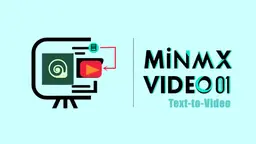ChatGPT Prompt Splitter Recursos
ChatGPT Prompt Splitter é uma ferramenta amigável que divide longos prompts de texto em pedaços menores e gerenciáveis para uma integração perfeita com o ChatGPT e outros modelos de linguagem.
Ver MaisPrincipais Recursos do ChatGPT Prompt Splitter
O ChatGPT Prompt Splitter é uma ferramenta baseada na web, fácil de usar, projetada para dividir entradas de texto longas em pedaços menores e gerenciáveis, adequados para uso com o ChatGPT e outros modelos de linguagem. Ele utiliza contagem de tokens para otimizar o tamanho dos pedaços, permite a personalização do comprimento máximo dos pedaços e mantém o contexto entre os segmentos divididos para garantir respostas coerentes da IA.
Divisão inteligente de texto: Utiliza um algoritmo para dividir prompts longos em pedaços ótimos com base no comprimento máximo especificado e na contagem de tokens.
Tamanho de pedaço personalizável: Permite que os usuários definam seu comprimento máximo de pedaço desejado, com um padrão de 15.000 caracteres por solicitação.
Preservação de contexto: Adiciona instruções aos pedaços para manter o contexto e garantir que a IA aguarde todos os segmentos antes de processar.
Interface amigável ao usuário: Oferece uma interface web simples e intuitiva para inserir texto e recuperar pedaços divididos.
Suporte a múltiplos formatos: Capaz de processar vários formatos de entrada, incluindo texto simples, PDFs e outros tipos de documentos.
Casos de Uso do ChatGPT Prompt Splitter
Criação de conteúdo: Escritores podem inserir longos artigos ou histórias para edição assistida por IA ou continuação em segmentos gerenciáveis.
Análise de dados: Pesquisadores podem dividir grandes conjuntos de dados ou relatórios para análise e insights assistidos por IA.
Suporte ao cliente: Equipes de suporte podem processar consultas ou documentação de clientes longas para geração de respostas assistidas por IA.
Processamento de documentos legais: Advogados podem dividir documentos legais extensos para sumarização ou análise assistida por IA.
Desenvolvimento de conteúdo educacional: Educadores podem dividir materiais de curso longos para simplificação ou geração de explicações assistidas por IA.
Vantagens
Supera limitações de caracteres dos modelos de IA
Melhora a eficiência no processamento de grandes quantidades de texto
Mantém o contexto entre os segmentos divididos para respostas coerentes da IA
Fácil de usar com uma interface web simples
Desvantagens
Pode exigir múltiplas chamadas de API, potencialmente aumentando os custos
Dividir textos muito complexos pode afetar a compreensão geral do contexto
Dependência de ferramenta externa para interação ideal com a IA
Tendências de Tráfego Mensal do ChatGPT Prompt Splitter
ChatGPT Prompt Splitter recebeu 1.3k visitas no mês passado, demonstrando um Leve Crescimento de 10.8%. Com base em nossa análise, essa tendência está alinhada com a dinâmica típica do mercado no setor de ferramentas de IA.
Ver histórico de tráfego
Artigos Populares

MiniMax Video-01(Hailuo AI): O Salto Revolucionário da IA na Geração de Texto para Vídeo em 2025
Apr 21, 2025

Códigos de Indicação HiWaifu AI em Abril de 2025 e Como Resgatá-los
Apr 21, 2025

VideoIdeas.ai: O Guia Definitivo para Criar Vídeos Virais no YouTube com Seu Estilo Único (2025)
Apr 11, 2025

Análise Completa do GPT-4o: O Melhor Gerador de Imagens com IA para Todos em 2025
Apr 8, 2025
Ver Mais







